

Walt Disney World Resort Itinerary Plans for School Field Trips: Maximizing Fun and Education
Overview of Walt Disney World Resort
Walt Disney World Resort is a vast entertainment complex in Florida featuring four theme parks, two water parks, over two dozen themed resort hotels, and myriad shopping, dining, and entertainment venues.
Introduction to Disney World Parks
Walt Disney World Resort is your destination for a magical adventure. The resort encompasses four main parks: Magic Kingdom , EPCOT , Hollywood Studios , and Animal Kingdom .
- Magic Kingdom : Home to Cinderella’s Castle, this park is divided into six lands with classic attractions like Space Mountain and Pirates of the Caribbean.
- EPCOT : This park is famous for the Spaceship Earth geodesic sphere and is split into the World Showcase and Future World, featuring cultural experiences and innovative rides.
- Hollywood Studios : Here, you can indulge in the glitz of Tinseltown with attractions like The Twilight Zone Tower of Terror and Star Wars: Galaxy’s Edge.
- Animal Kingdom : Experience a lush, wildlife-centric theme park with the awe-inspiring Avatar Flight of Passage and the thrilling Expedition Everest.
Understanding Disney Youth Programs
Disney Youth Programs offer educational experiences tailored for school groups. These programs combine learning with the excitement of Disney World’s offerings.
- Educational Series : Disney provides interactive workshops that focus on topics such as leadership, the arts, and science aligned with state standards.
- Performing Arts : School bands, choirs, and dance groups have the opportunity to perform on the Disney stage or participate in professional workshops.
- Youth Tickets : Special ticket pricing is available for educational groups, making scheduling and planning your field trip both convenient and budget-friendly.
Key Steps in Planning a School Field Trip
When planning a school field trip to Walt Disney World Resort, focusing on setting goals, budgeting, and selecting appropriate travel dates is vital.
Setting Itinerary Goals
Define clear objectives for your Disney World trip to shape a memorable and educational experience. First, determine the educational component of the trip, such as exploring wildlife at Disney’s Animal Kingdom or studying innovation at EPCOT. Second, assess enjoyment factors, such as scheduling time for popular attractions.
Budget Considerations
Craft a comprehensive budget that includes all potential costs associated with the Disney World field trip. Outline expenses such as transportation, admission tickets, meals, and accommodation. Incorporate potential spending on souvenirs and incidental expenses. Consider initiating fundraisers well in advance to aid with the financial aspect.
Selecting Travel Dates
Choose optimal dates for your group’s Disney World trip to ensure maximum enjoyment with minimal disruptions. Consider off-peak times for fewer crowds and generally better rates. Balance the travel schedule with the academic calendar to minimize impact on schoolwork.
Reservation Process and Accommodations
Planning a school field trip to Walt Disney World Resort involves navigating through a structured reservation process and ensuring proper accommodations are in place for a comfortable and memorable experience. Attention to detail is paramount when arranging park tickets, dining, lodging, and transportation.
Booking Park Tickets and Resorts
Secure your group’s park tickets and resort accommodations well in advance. Contact Disney Group Sales or use the Disney Youth Programs website to facilitate your booking. Group discounts may be available depending on the size of your party and dates of your visit.
- 1st : Choose your dates and estimate the number of students and chaperones.
- 2nd : Select a Disney Resort that caters to group needs and fits your budget.
- 3rd : Purchase park tickets for each attendee, opting for multi-day passes if necessary.
Meal Planning and Reservations
Coordinate meal plans to ensure timely and convenient dining experiences. Disney offers various dining options, including quick-service and table service meals that can be pre-booked. Consider the Disney Dining Plan for a seamless payment process.
- 1st : Decide on dining preferences, whether quick-service or table service meals.
- 2nd : Make reservations for table service restaurants 180 days in advance to guarantee seating.
- 3rd : Inform Disney of any dietary restrictions or allergies in your group.
Transportation and Logistics
Arrange transportation to streamline travel within and to the Walt Disney World Resort. Disney provides complimentary transportation options such as buses, monorails, and boats between parks and resorts for resort guests.
- 1st : Determine your method of arrival to the Walt Disney World Resort, whether by bus, car, or plane.
- 2nd : Utilize Disney’s transportation network for travel between hotel, theme parks, and attractions.
- 3rd : Schedule Disney’s Magical Express service if you require airport transfers.
Educational Opportunities and Group Activities
Disney World Resort offers a unique blend of educational programs and team-building activities designed specifically for students on field trips. These programs not only foster learning and creativity but also provide fun, immersive experiences.
Disney Educational Programs
Your students can engage in specially curated education events that focus on various subjects such as science, the arts, and humanities. The Disney Youth Programs are developed to enhance classroom learning by providing practical applications at the Park.
- Choose from a variety of interactive workshops that correspond with educational curricula, offering students hands-on learning experiences.
- Participate in performing arts workshops , where students can unleash their creativity and learn from Disney professionals.
- Engage in environmental education sessions that explore wildlife conservation and sustainable practices within the Disney Resort.
Disney’s field trips give students the chance to see real-world applications of their studies, extending learning beyond textbooks.
Team-Building and Recreation
Recreational activities at Walt Disney World Resort serve as excellent team-building opportunities for student groups.
- Take part in scavenger hunts around the parks to promote teamwork and problem-solving skills.
- Engage in group competitions , like trivia games, that can be organized to include educational content matching your trip’s theme.
These experiences help students collaborate and develop social skills in an enjoyable and memorable setting. Disney puts a strong emphasis on creating events that blend education, teamwork, and fun, tailored to every age group.
Safety, Accessibility, and Special Needs
Ensuring safety, providing seamless accessibility, and accommodating special needs are critical components for successful school trips to Walt Disney World Resort. Proper planning addresses these elements to create an inclusive and secure environment for all students.
Chaperone Assignments
Assign chaperones to student groups before your visit. Each chaperone should have the cell phone number of other chaperones and the trip coordinator. Establish a strict ratio of students to chaperones to maintain oversight—an ideal ratio being one chaperone per four to six students.
Accessibility Services
Walt Disney World Resort caters to guests with disabilities through various Accessibility Services . Reserve mobility aids such as Buena Vista Scooters ahead of time. Utilize the Disney Magic with Disability Access Service (DAS) that assists guests who are unable to wait in conventional queue environments due to a disability.
Emergency Contact Procedures
Develop a solid emergency contact procedure . Ensure each student and chaperone possesses a list of cell phone numbers for all group members. Set up a designated meeting point within the park in case of separation. Instruct students to approach the nearest Disney staff member should they need immediate assistance.
Maximizing the Disney Experience
Creating a memorable school field trip to Walt Disney World Resort hinges on effective use of time and resources to enhance the Disney magic.
Leveraging FastPass+ and Genie+
FastPass+ has been replaced by Disney Genie+ , a paid service that allows you to skip the lines at select attractions. First, purchase Disney Genie+ for your group, ensuring faster access through Lightning Lanes. Next, choose your first attraction early in the day; options include popular rides and shows. Remember, the sooner you book your Lightning Lanes, the more magic you’ll enjoy.
Utilizing the My Disney Experience App
Install the My Disney Experience app to streamline your trip planning. Use the map to locate attractions, view wait times, and manage Genie+ selections. Importantly, this hub also stores your group’s dining reservations, ticket details, and PhotoPass information, keeping your day effortlessly organized.
Photo Opportunities and Souvenirs
Capture the enchantment with Disney’s PhotoPass service. Strategic photo spots are located throughout the parks; iconic locations include Cinderella’s Castle and the Tree of Life. To cherish these moments, consider purchasing a PhotoPass package. For souvenirs, allocate time to visit themed shops where you’ll find unique Disney merchandise, ensuring each student takes a piece of the magic home.
Tips and Tricks for Group Management
Managing large groups, especially with children, requires careful coordination and strategies to ensure a smooth field trip experience.
Organizing Students and Staff
Firstly , assign each student to a specific staff member in a pre-planned ratio. Aim for one adult per every five students for optimal supervision. Place students in color-coded groups to identify their assigned staff member easily.
- List the students’ names and assign sequential ID numbers for quick roll calls.
- Use a colored lanyard system to visually link students with their group leaders.
- Prepare emergency contact information cards for students to carry at all times.
Communication Strategies
Develop , as a priority, a robust communication plan to maintain contact among staff members. Equip each adult with a walkie-talkie or a smartphone with a group messaging app like Ava pre-installed.
- Establish clear communication protocols for regular check-ins.
- Educate students and adults on how to report concerns or comments immediately.
- Implement a buddy system to ensure no child becomes separated from the group.

Hollywood Studios Itinerary Plan: Your Guide to a Perfect Day

Animal Kingdom Itinerary Plan: Optimizing Your Adventure-packed Day
Typhoon lagoon water park itinerary plan: maximizing your visit with strategic planning, blizzard beach water park itinerary plan: your guide to a perfect day.

First-Time Visitors Walt Disney World Itinerary Plan: Your Essential Guide
How To Make A Visit To Disneyworld’s EPCOT Educational
- Published on March 2, 2021
- by The Mom Trotter
- in Amusement Parks , Disney , Travel
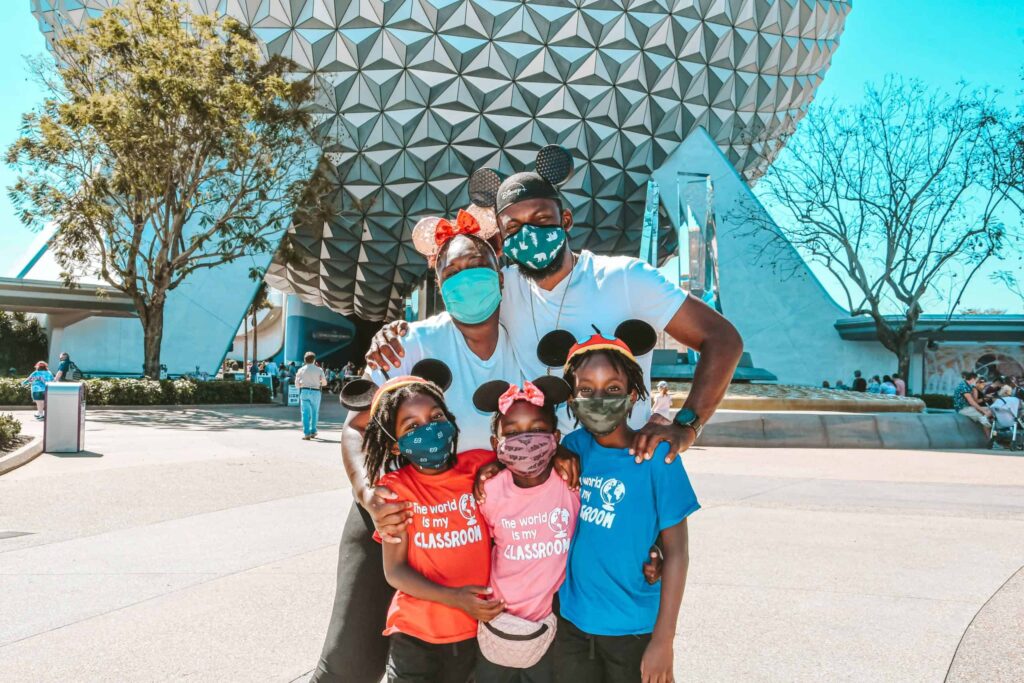
This post may contain affiliate links. By clicking on any of the links below, I may get a commission if you make a purchase at absolutely no additional charge to you. This helps offset the costs of running this blog & I appreciate your support. Please see my privacy & disclosure policy for more.
Table of Contents
For a homeschooler or for traveling families on a Disney World vacation , every day is an opportunity to learn. What many people don’t realize about the Disney parks is that they have always been learning experiences.
Since the first park was “dedicated to the ideals, dreams, and hard facts that have created America” Disney Imagineers have constructed multiple theme parks dedicated to our history, our future, and our imaginations. In short, everything you learn about in school.
If you think of Disney as simply reimagined fairy tales mixed with popcorn and churros, you miss the whole point! The second Walt Disney World theme park is the most enriching teaching experience for vacationing homeschoolers on an EPCOT field trip.
The Four Realms of EPCOT
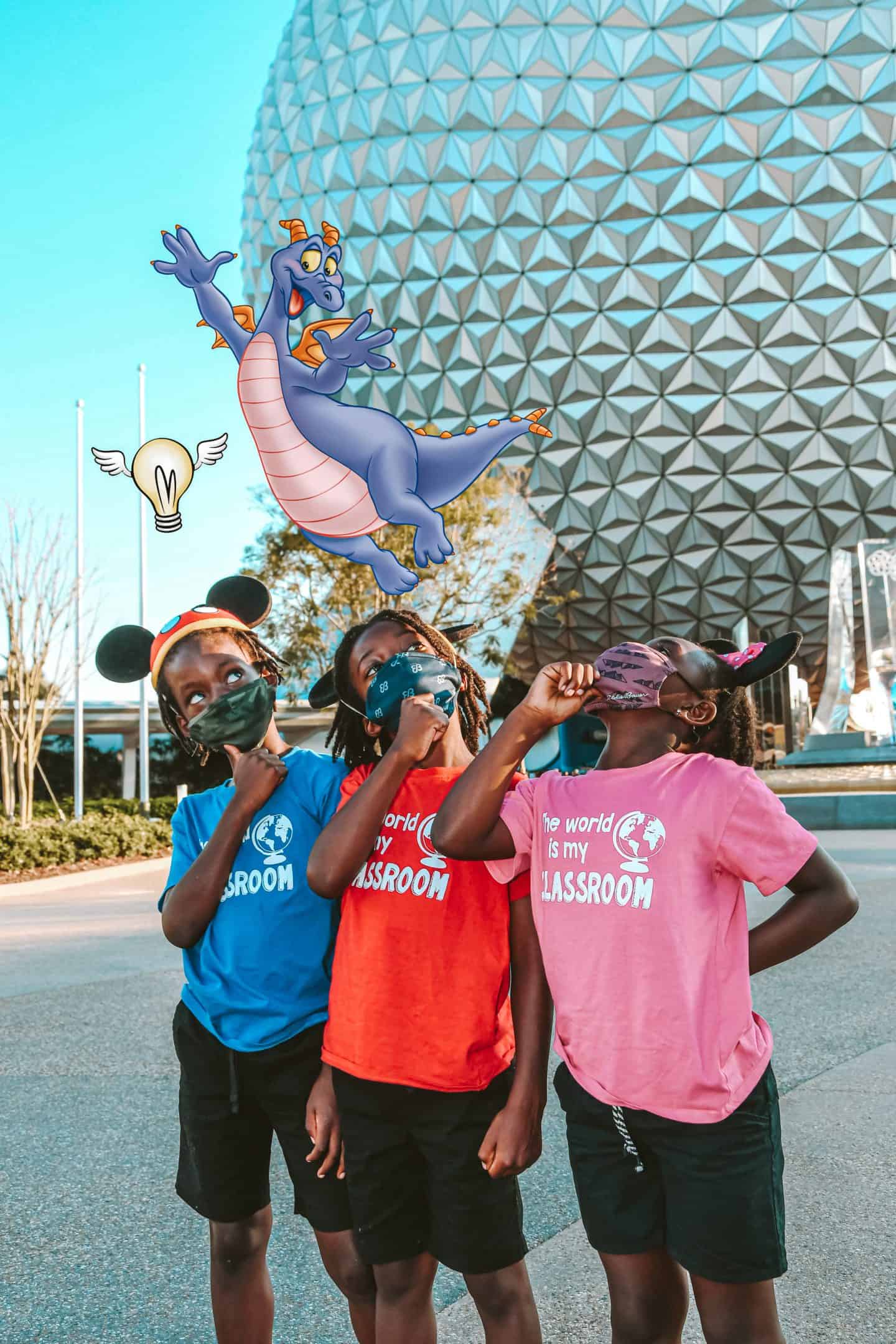
EPCOT, as we know it today, is in the midst of a massive transition. The park consists of two hemispheres that Disney is in the process of transforming into four distinct yet unified realms.
Of these four new themed areas, three are dedicated to learning while the fourth focuses on a celebration (Festivals). The new areas are simply different ways of viewing the old EPCOT you may be familiar with.
It puts each one within a framework that lets them more seamlessly contribute to the entire park’s theme of world unity. In short, they make a more cohesive EPCOT field trip day. These three areas showcase Discovery and Nature as well as various world cultures.
The eastern end of Future World has been home to the greatest number of pavilions. Not only does the east side outnumber the west 4 to 3, but it has seen the most replacements. On the horizon are two new attractions, a roller coaster themed to Guardians of the Galaxy, and a pavilion dedicated to Play.
While both of these seem open-ended at best in terms of learning experiences, Mission Space and Test Track make well-established examples of fusing attraction thrills with education. They capture the excitement of scientific discovery.
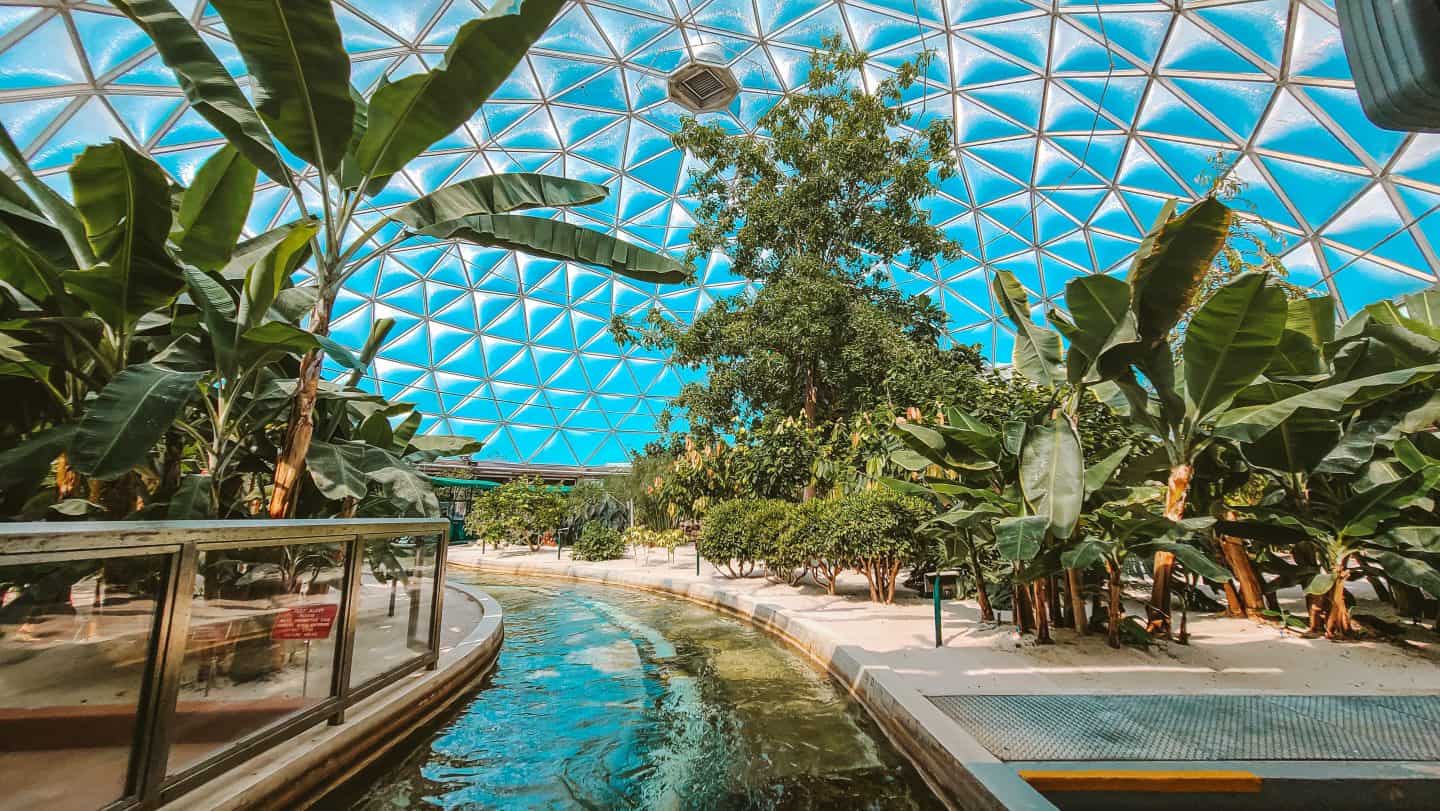
The longest-standing EPCOT attractions may seem the most dated, but they are the most enriching of all the Future World experiences. This west side of The north end of the park features pavilions dedicated to the land and seas.
Their inner workings have seen changes over the years with updates and sponsorships, but the heart of these experiences remains very much the same. Here you will be able to dive into marine biology and agriculture in ways that are uniquely Disney.
World Showcase
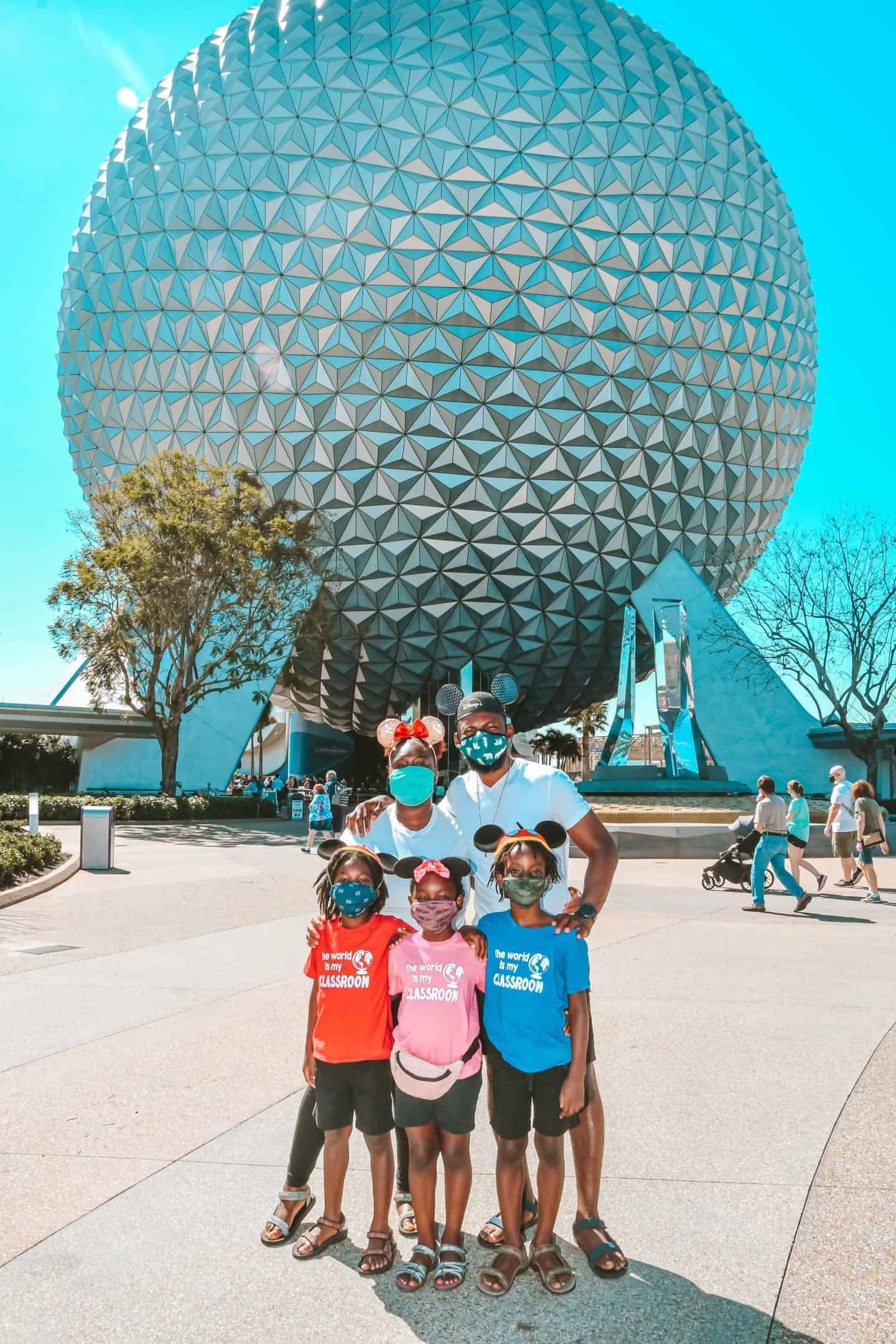
While Future World holds many secrets for homeschoolers on an EPCOT field trip to discover, The World Showcase is the best-known example of how Education fuses with family entertainment.
Each pavilion showcases a country with a hands-on, interactive environment. These 11 1/2 pockets that surround the World Showcase Lagoon highlight customs, cuisine, and distinct architectural or geographical elements for each world culture.

Science and Exploration
Right now, if you visit EPCOT hoping to teach your kids something, or reinforce lessons in science the World Discover section to the left of the main entrance holds two powerfully motivating and excitement-driven learning experiences.
Mission Space is a very thrilling attraction that may be too intense even for those old enough to ride. However, as we enter into a new age of space exploration with companies like SpaceX and Virgin Galactic and a burgeoning American Space Force, it couldn’t be more timely.
Normally, there are interactive experiences within the pavilion outside of the realistic space flight simulator. If you find this area closed due to COVID you can still learn from the plaques that reveal a timeline of momentous historical events in Space Travel.
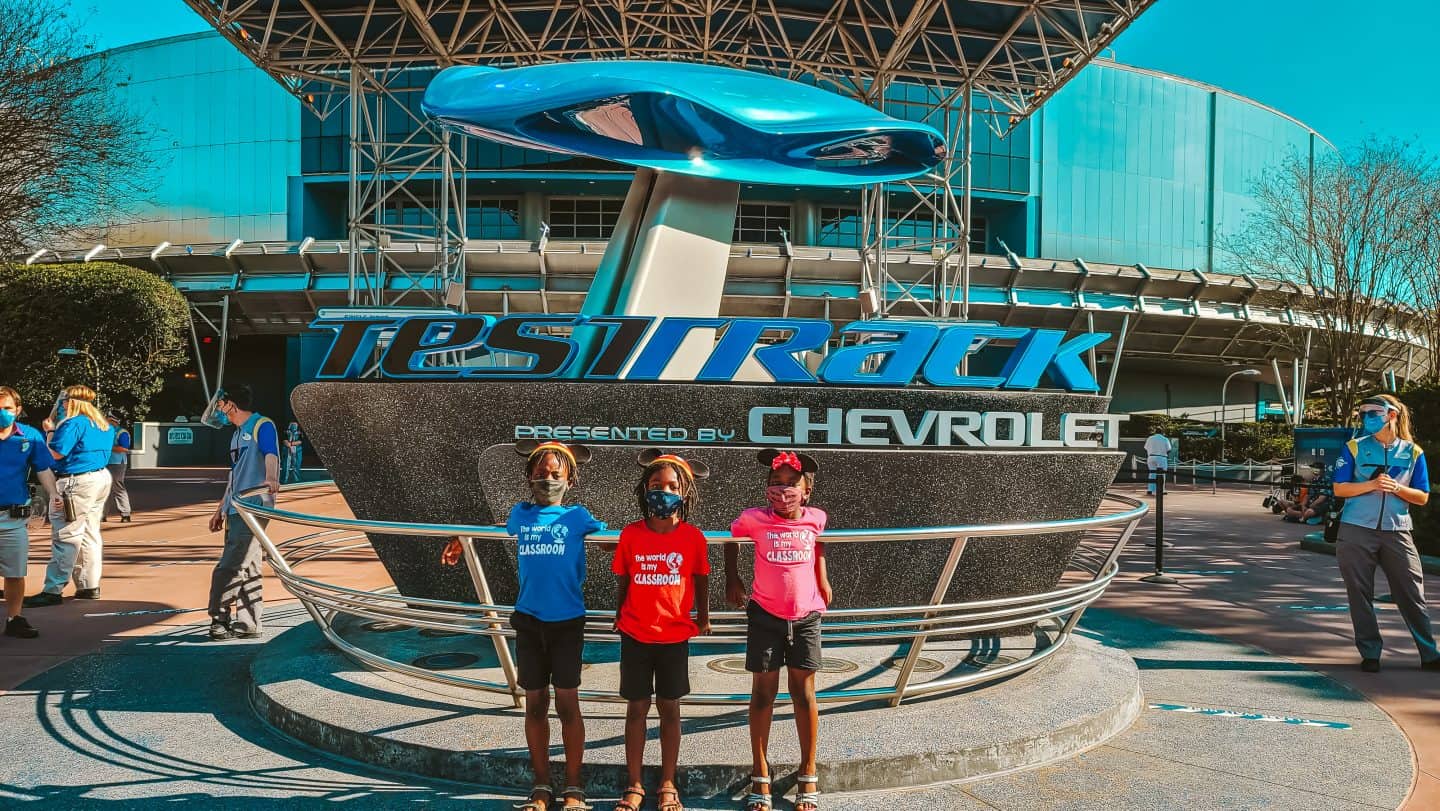
Test Track is the most overlooked and undervalued learning experience. This engineering-themed ride gets overshadowed by the thrill of its top speed of 65 mph, which is really fast by Disney standards.
What people miss is that the ride is all about designing your own car with the desired outcome in mind. You can shoot for fuel efficiency, power, speed, etc.
The ride then uses MagicBand technology to run your program through the simulator and rate your vehicle’s prowess. How cool is that? Again, there are more opportunities for interactive exploration with your car design that may be temporarily unavailable.
The Land and Seas
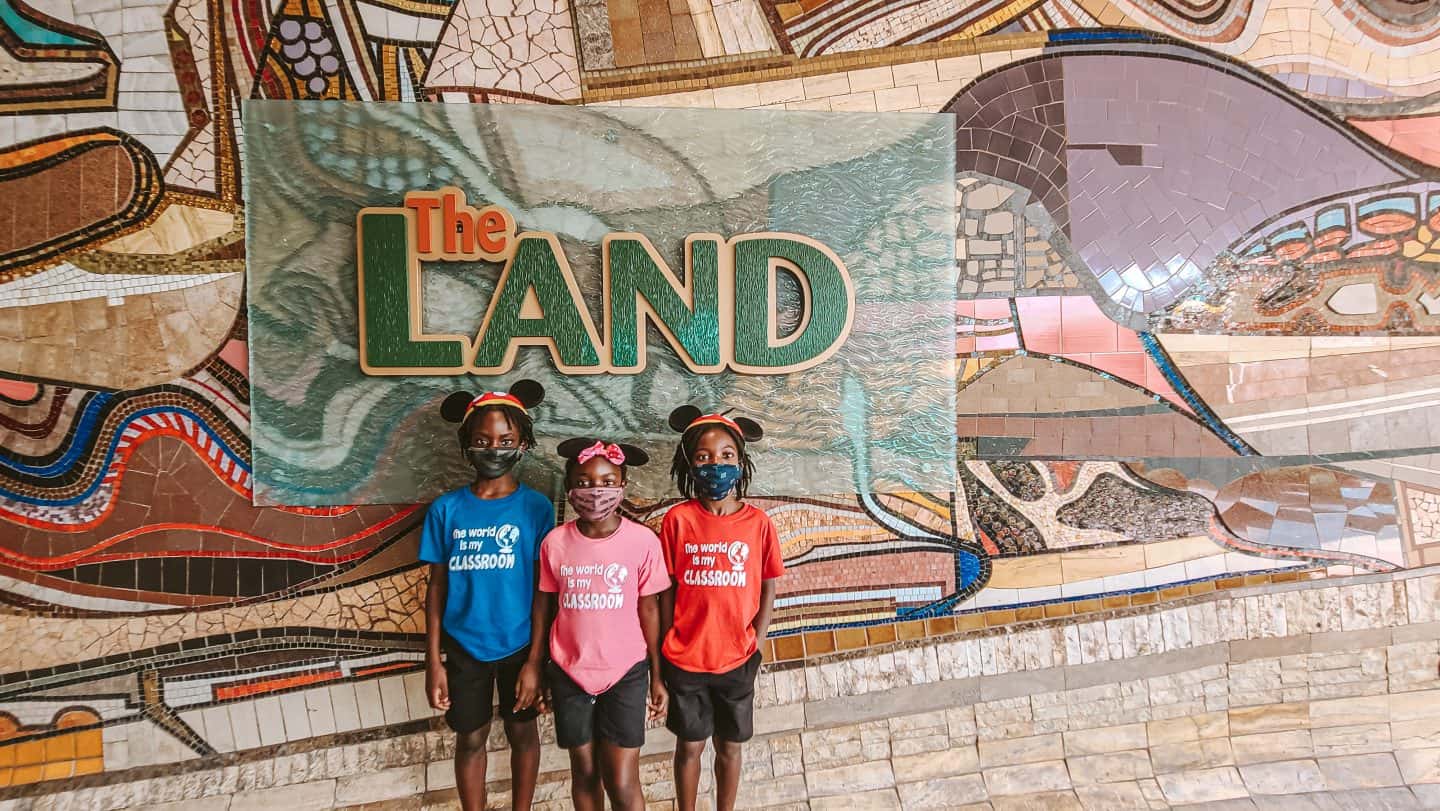
If exploring nature is your goal, next to Disney’s Animal Kingdom, there is no better place than Future World West. While the other theme park emphasizes animals and their natural habitats, EPCOT uniquely focuses on plant and oceanic life.
There is no overlap between the two, so if you want to make a day of it, you might plan on park hopping from Disney’s Animal Kingdom to EPCOT just to finish the day at The Seas with Nemo and Friends and the Land Pavilion.
The Seas with Nemo and Friends uses Finding Nemo as a way to immerse (sorry) children in the seabase-themed environment where they can learn about reefs and various forms of aquatic life.
This pavilion also offers tours that include diving experiences with the sea turtles, sharks, and other animals in the enormous 5.7 million gallon fish tank.
The Land features Soarin’ which takes guests around the globe in an exhilarating flight simulation, but the best learning experience is the boat ride Living with the Land.
This slow-moving ride highlights the world’s ecosystems and introduces guests to unusual farming practices that use technology to farm more sustainably.
The real functioning greenhouses you see on the ride grow food used all around the resort, including the restaurants within the pavilion. For a better education on how the Greenhouses operate, take the relatively low-priced Behind the Seeds tour.
Culture and Communication
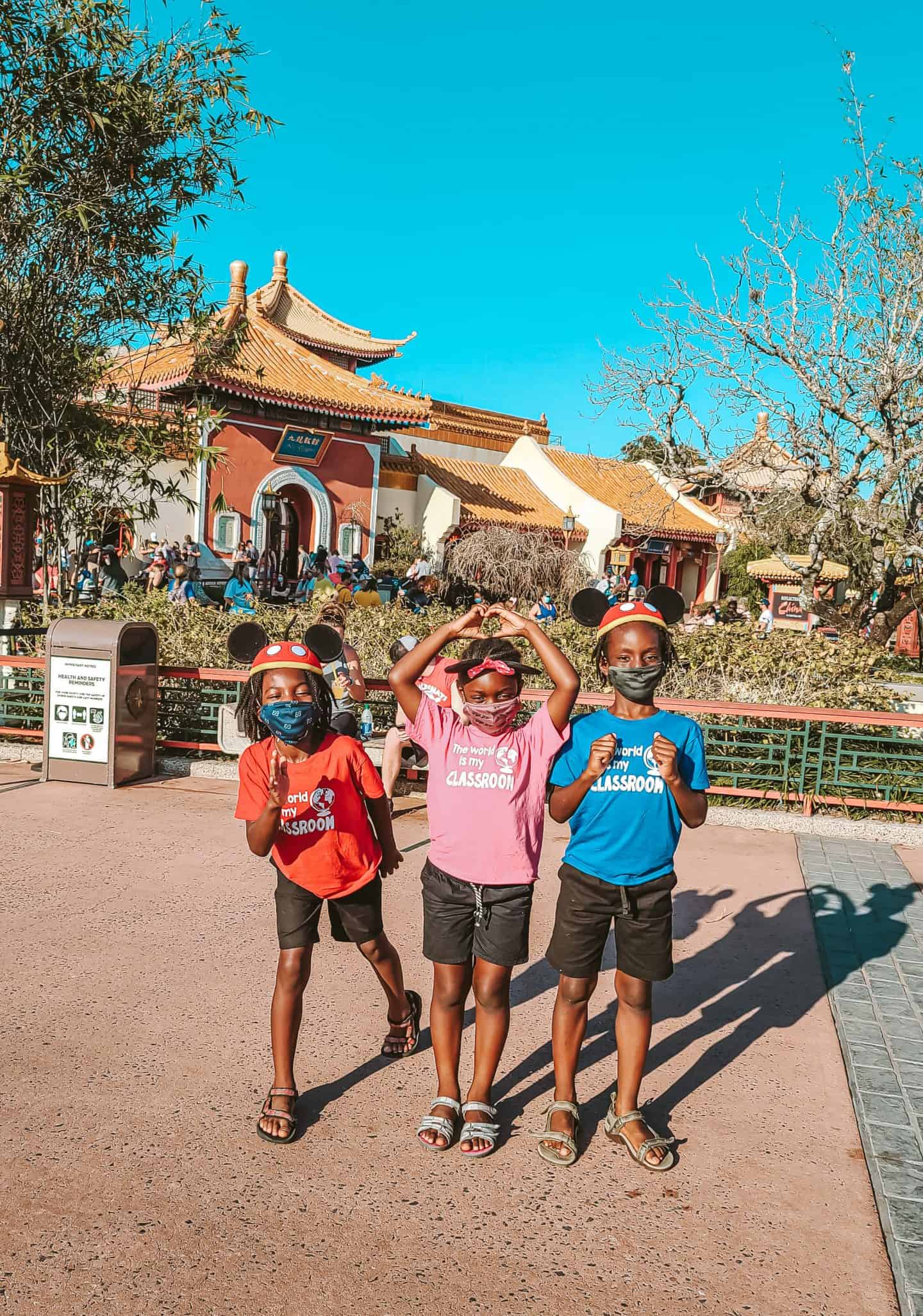
World Showcase is a cultural hotspot. For social studies enthusiasts The international section of EPCOT is the place to be. Each pavilion highlights the architecture, cuisine, and other cultural elements that you can expand on with future homework.
11 different countries showcase their finest features including plenty of historical details that make great research projects. Take lots of pictures and notes on what you see for some extra digging on the internet. One of the most underrated elements of the World showcase is the art galleries.
You will find these in Mexico, Norway, China, the United States of America, Japan, and Morocco. There are also educational shows in China, the United States of America, France, and Canada. In addition, Mexico has a ride-through experience that gives a glimpse of the many sites and customs they hold there.
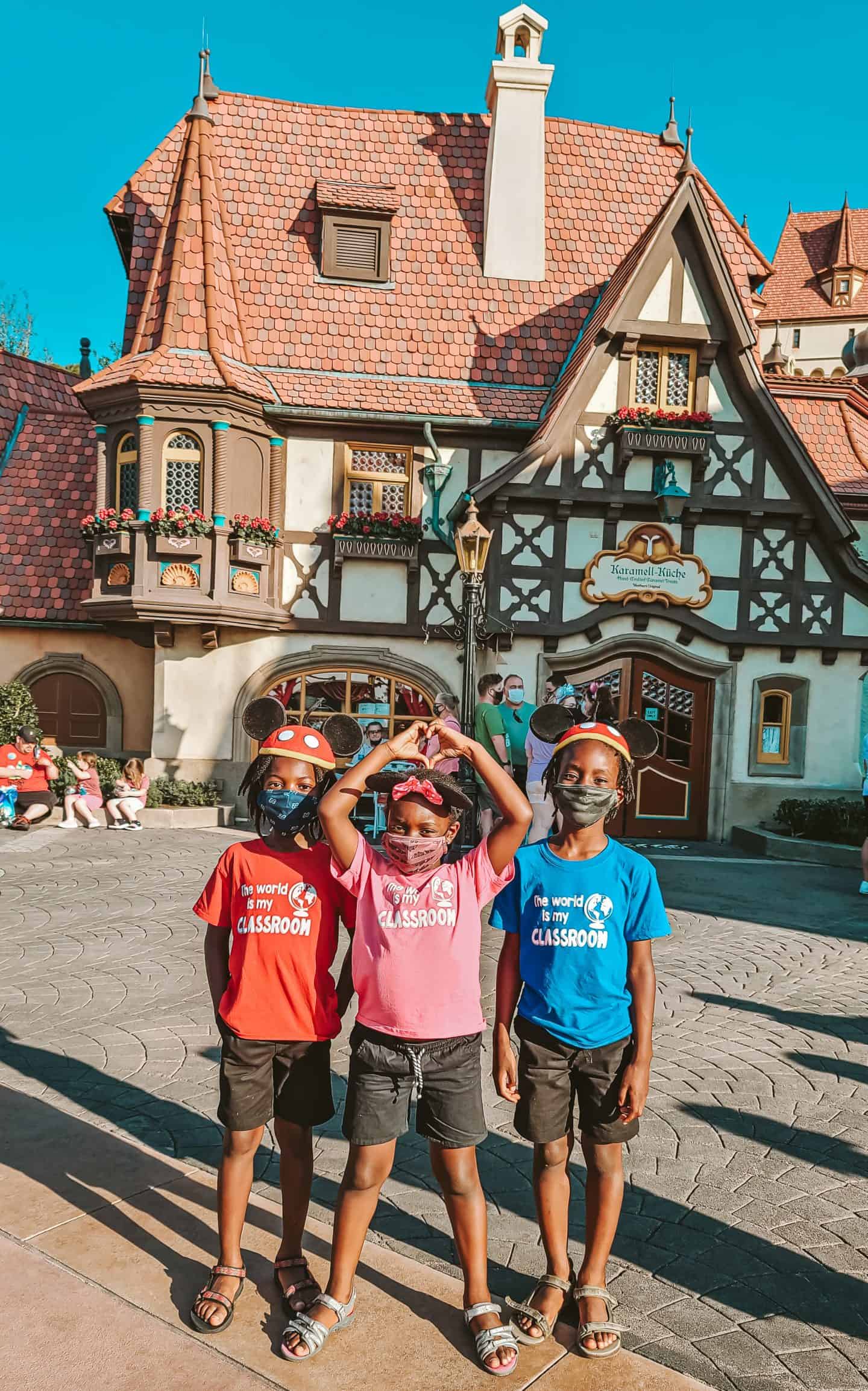
At the heart of EPCOT is Spaceship Earth. This ride-through dark ride provides an excellent timeline of communication from the earliest cave drawings to the World Wide Web.
This attraction is marked for closure in the not-too-distant future to make drastic changes. There is no telling how the new experience will be different. Try not to miss it in its current state before it’s changed forever.
I hope that this article helps you as you plan your trip to EPCOT. We have been there several times and still enjoy it each time.

Hey Fam, I’m so glad you’re here! I am an entrepreneur and travel enthusiast who is passionate about sharing an alternate way of living surrounding travel, homeschooling, parenting and financial independence, with a mission to inspire other families.
Grab My Family Travel Guide
Get ready to transform your family vacations with our upcoming Travel Guide.
Don’t miss out on making your family trips more memorable and stress-free. Join our waitlist now and be the first to grab a copy that will pave the way for a lifetime of adventurous globe trotting and meaningful memories.
Related Articles
12 best us states to visit with kids, things to do in houston with kids + 4 new itineraries, where is the best place to stay in hong kong, how to spend 4 nights in phuket thailand with kids, ten hours in beijing – with kids, 6 singapore landmarks you must visit.

How Is Disney World an Educational Trip?

Disney World isn’t just a magical place filled with thrilling rides, enchanting characters, and memorable experiences. It’s also a place of learning, where kids and adults alike can gain knowledge and understanding about various topics. Whether it’s history, science, culture, or environmental conservation, Disney World offers a plethora of educational experiences. Let’s dive deeper into how Disney World is more than just a fun-filled vacation destination, but an educational trip as well.
Disney World is an educational trip as it offers various learning experiences in addition to its entertainment. Epcot’s World Showcase exposes visitors to diverse cultures, Disney Imagination Campus provides classes and workshops focusing on STEM education, and the Animal Kingdom offers insights into nature, wildlife, and conservation. Moreover, Disney Youth Programs apply classroom lessons in real-life scenarios, and several attractions incorporate STEM concepts, making learning interactive and fun.
Exposure to Diverse Cultures: Epcot’s World Showcase
Epcot’s World Showcase is a cultural melting pot, featuring 11 pavilions each representing a different country. These countries include Mexico, Norway, China, Germany, Italy, the United States, Japan, Morocco, France, the United Kingdom, and Canada. Each pavilion offers an immersive experience of the respective country’s architecture, food, art, and even street performances.
Kids can participate in the Kidcot Fun Stops, an interactive activity where they learn about each country and its culture while collecting stamps and creating a personalized souvenir.
Science & Technology: Disney Imagination Campus
Disney Imagination Campus is a program that offers classes and workshops that focus on science, technology, engineering, and math (STEM) education, as well as arts and humanities. Here, students learn from industry professionals and get hands-on experience in various fields.
For instance, the Disney YES (Youth Education Series) Programs bring science, technology, engineering, arts, and math (STEAM) concepts to life through integrated learning experiences at Walt Disney World Resort.
Nature and Wildlife: Animal Kingdom
Disney’s Animal Kingdom is a perfect place for learning about nature, wildlife, and conservation efforts. The park’s Conservation Station provides insights into animal care, meal preparation, and veterinary treatment.
Children can participate in the Wilderness Explorers program, which encourages them to explore the park, complete various activities, and earn badges, all while learning about animals, conservation, and the environment.
Disney Youth Programs: Education Meets Entertainment
Disney Youth Programs offer performance, education, field-trip, and celebration opportunities for student groups. These programs focus on real-life applications of classroom lessons, making learning fun and practical.
STEM-focused Attractions: Learning Through Fun
Disney World features several attractions that incorporate STEM concepts. For instance, Epcot’s Spaceship Earth explores the history of communication, from cave paintings to the internet, while Mission: SPACE simulates a space launch for aspiring astronauts. These attractions make learning interactive and enjoyable.
Disney World provides a unique blend of entertainment and education, making it an excellent choice for an educational trip. Visitors can learn about various subjects, including culture, history, science, technology, engineering, and math, all while enjoying the magic of Disney. So, the next time you plan a trip to Disney World, remember that it’s not just about the rides and characters, but also about the rich, educational experiences it offers.
Frequently Asked Questions
What ages are the disney imagination campus programs suitable for.
The Disney Imagination Campus programs are suitable for all age groups. They offer a variety of classes and workshops designed for elementary, middle, high school, and college students.
What are the operating hours of the Animal Kingdom’s Conservation Station?
The Animal Kingdom’s Conservation Station typically operates from 10:00 AM to 5:00 PM, but the timings can vary depending on the season. It’s best to check the official Disney World website for the most accurate information.
Can adults participate in the Wilderness Explorers program at the Animal Kingdom?
Yes, the Wilderness Explorers program at Disney’s Animal Kingdom is open to guests of all ages. While it’s geared towards children, adults can also participate and learn about animals, conservation, and the environment.
Are there additional costs for participating in the Disney YES Programs?
Yes, there are additional costs for participating in the Disney YES Programs. The cost varies depending on the program and does not include admission to the parks. For detailed pricing information, visit the Disney YES Programs website .
Is Epcot’s World Showcase accessible with a standard Disney World ticket?
Yes, Epcot’s World Showcase is included with standard admission to Epcot. There’s no additional fee to explore the World Showcase and its 11 country pavilions.
Related Posts

What Time Does Disney World Hollywood Studios Open?
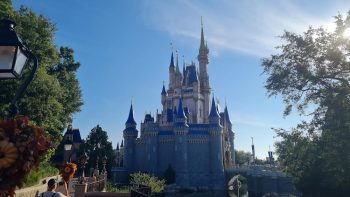
What Time Is the Night Show at Magic Kingdom?

Where to Get Macarons in Epcot
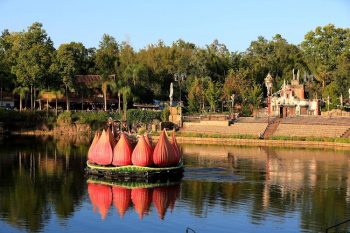
What Are They Building at Animal Kingdom?

What Is the Mask Policy at Disney World?

Where Is the Pineapple Promenade at Epcot?
About the author, leave a comment cancel reply.
Your email address will not be published. Required fields are marked *
Save my name, email, and website in this browser for the next time I comment.
Leah is an expert on Disney World and Universal Studios, and she loves sharing her tips and tricks for visiting the parks with others. She knows both parks' ins and outs and can help you make the most of your visit.
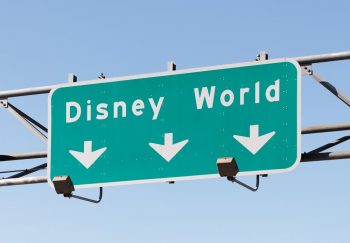
Where Is Art of Animation in Disney World?

Which is the Best Disney Park in Orlando?

Best Disney World Parks by Age Group
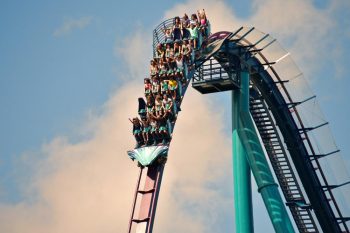
What Are Disney Vacation Club Points?

What Was the First Roller Coaster at Disney World?

What Places Are in Epcot?

Planning a High School Field Trip to Walt Disney World
In high school, I went on two school trips to Walt Disney World. I had an amazing time with my friends, and the memories have stayed with me to this day. Looking back on the entire experience as an adult, I have endless praise for my teachers, who planned the entire trip from start to finish. They chose to spend their entire Spring Break with 60 high school students. They deserve a medal.
I have spent this past week researching and speaking with different educators on how to organize a school trip to Walt Disney World. Although it’s impossible to fit in every detail, here are some highlights to consider when planning your own Walt Disney World field trip.
First Steps
Planning a school trip to Walt Disney World should begin at least a year in advance. While it would be much easier to hire a touring company to plan and execute the vacation, it might be very expensive. Planning your own trip is not only more cost effective, but gives you complete control over the vacation as a whole. Look into the events you want to attend and the places you want to go. Estimate expenses to determine the total cost for each student. From there, secure a total group number by requesting a small deposit from each student. In addition, have each student fill out field trip and medical request forms. Dot those i’s and cross those t’s!
Planes, Trains and Automobiles
While it may be faster (depending on where you live) to take a plane, transporting 60+ kids via air is not wallet-friendly, no matter which way you look at it. Consider alternative modes of transportation. In my case, we took two coach buses from Minnesota to Florida. We booked the bus company very early on and requested four bus drivers. That way one could drive while the other slept, and no one was ever overworked. Not only was a bus cheaper, but we then had a vehicle to move us around within Florida. Note: You will have to pay for the bus drivers’ meals and hotel rooms, so be sure to factor that into the budget.
Oh, and in case you’re wondering, it takes about 30 hours to get from Minnesota to Florida. When you’re creative and tired enough, the floor of a bus can be quite a comfortable make-shift bed. Trust me.
Hotel Accommodations
As my group went over Spring Break, a block of rooms were booked a year in advance. When selecting a hotel, consider the location. How close is it to the parks? Is it in a safe area? Would it be cheaper to stay at a Walt Disney World Resort ? To save on food expenses, try to find a hotel with a continental breakfast. Closer to trip time, have a sign up sheet so students can write down who they would like to room with.
Disney Youth Programs
Fellow TouringPlans blogger Kim T. gave a great overview of Disney’s Youth Education Series. These accredited programs teach lessons already established in the classroom back home and are further reinforced through in-park experiences.
I traveled with members of our music department, so we attended two workshops: “You’re Instrumental,” and “DisneySings.” Both workshops were taught by respected and experienced instructors and (without spoiling anything) included a surprise or two full of magic! In addition to these (and other) workshops, students are even given the opportunity to perform on stage at the Magic Kingdom or march in special parades. These programs are well received by the students and make them feel like part of the Disney family.
Through Disney Youth Programs educators can receive group discounts for both the workshops and park tickets. This includes park hopper passes, as well. If you would like an article on Disney Youth Programs, let me know in the comments!
Mo’ Money, Mo’…..Organizing
You can’t deny that money matters when planning a trip to Walt Disney World. Vacations can be spendy, and a school trip is no exception. That’s why the kids at my high school used fundraisers to raise their own money. Not only did it lessen the financial load, but paying for a vacation themselves gave the kids a sense of responsibility and a solid work ethic. If your school plans on doing several fundraisers, an installment payment plan may be the right choice for you. Once final payments have been collected, use a school credit card or designated bank account to pay for all the expenses.
Question: But Angela, what about when we go out to eat as an entire group? How do we allocate the money?
Answer: Good question! Our group ate one meal together every day. If it was at a restaurant, a teacher would arrange the meal in advance with the restaurant manager. They would work out 3-4 entrees the kids could choose from and a set price for each student. If a student ordered any additional items, they would be responsible for covering the remaining cost.
One last housekeeping detail before moving on: be sure the students have enough of their own money for separate meals, souvenirs, and other miscellaneous details.
A full itinerary is the way to go when it comes to those youngins. Working with children, I notice that when they get naughty, it’s most likely because they are bored. Thankfully, it’s darn near impossible to get bored at Disney World. It’s the perfect place to run those kids ragged so they sleep the sleep of angels upon returning to the hotel.
When writing out your itinerary, make sure you allow plenty of time for travel. If you’re rushing to get to your destination with that many students, things may be overlooked and problems could arise. Also, give your kids enough time to enjoy the parks. Back in my day (before FastPass+), a 90 minute wait was standard for popular attractions such as the Tower of Terror and Expedition Everest . We needed the extra time to enjoy as many attractions as we could.
Looking back at my old trip itineraries (yes, I’m a hoarder when it comes to my Disney paraphernalia), I saw that our park visits were centered around parades and shows. We were a bunch of musical junkies, so were sure to attend the Festival of the Lion King and Finding Nemo – The Musical while visiting Animal Kingdom. While at Magic Kingdom, we would arrive several hours before Wishes! We would meet and watch the fireworks show as a group before leaving the park. Our teachers did a superb job making sure we saw the best side of each park.
There’s always the question of how many chaperones to bring on a school trip. When it comes to high school students, a 1:10 ratio (or less if you can spin it!) seems to be the way to go. If possible, see if a nurse or doctor is willing to accompany your group should anyone fall ill or get hurt. When selecting chaperones, pick adults that are good at managing kids and who will be firm (when necessary) and consistent regarding the rules. Don’t be afraid to send those chaperones on a night time patrol of the hallways. It will prevent students from trying to sneak out of their rooms in the middle of the night (yes, this happens) and will result in a safe and enjoyable trip.
The Safety (and Rules) Dance
When traveling with this many students, safety is key. Rules and expectations play a huge factor in ensuring a safe and worry-free vacation. Make sure your students have the rules down pat to avoid any mishaps or scary situations. Below are a few rules I remember from my own trip:
- Do not leave the parks on your own.
- Explore parks in groups of 4 or more.
- Never invite outside guests inside your hotel room.
- The door must be propped open if both boys and girls are in one room.
- Take care of yourself: hydrate and get enough rest.
Before the students explore the parks on their own, designate a check-in location. Twice a day at a time of your choosing, have them stop by so you know all is well. It’s a good way to keep track of them and gives them a security point if they need help from a chaperone. Attractions stall and lines get long, so make sure they have your cell phone number to let you know if they’re running a minute or two behind.
Consequences are real and should be enforced when needed. On my school trip, failure to respect and follow the rules resulted in either a phone call home or a permanent spot next to a chaperone for the remainder of the trip. However, the fear of God was instilled in us by both our parents and teachers, so my friends and I didn’t step a toe out of line!
We’re All in This Together (Name that Disney Channel Original Movie!)
When planning a school field trip, the goal to accomplish should be a safe trip full of community building and bonding. It’s an opportunity for the students to make memories and bring them back home. As an educator, it takes a lot of time to plan this kind of adventure, but I promise you it will mean the world to your students. On my school trips, I was never once scared or anxious. I knew I was well taken care of and safe at all times. It was the opportunity of a lifetime and is something I will always remember fondly.
What other tips do you have for those planning a field trip to a Disney park? Share them in the comments!
You May Also Like...

In the retail world, the week of July 4th means one thing--clearance the summer stuff so you can set back to…

Although nuiMOs may have taken the spotlight for some, Wishables continue to be a popular mini plush at Walt Disney World.…

We love being in the parks, and enjoy bringing you along with us through our social media posts. With so much…

You're taking your family to Walt Disney World. Yay! But if your family includes babies and toddlers, you may be wondering…
- Disneyland Attractions to Skip
- Meet the Characters from Big Hero 6 Beginning This Weekend
Angela Dahlgren
Angela is cohost of the TouringPlans Podcast and regular contributor to the TouringPlans YouTube channel. When she's not talking about the happiest place on earth, she spends her time entertaining her own little Minnie and Mickey Mouse. You can find her on twitter @AngelaDahlgren or via email - [email protected]
10 thoughts on “ Planning a High School Field Trip to Walt Disney World ”
Hello, we’re planning a school trip to Disney and need help with the choice of music workshops before we organize an actual trip. What is the best way to make students like the idea of an educational trip (with the assignments afterwards)? We’re worrying because the tasks may discourage them.. Sven Taow, art and music teacher
Hello! I would love an article on Disney Youth programs. Thanks!
I had a very nice high school trip to WDW for magic music days, and I have seen plenty of school groups in the parks.
But in college and after that, the amount of stories and trouble I heard of people getting into is pretty EPIC or scary depending on your viewpoint.
Do not book time in the itinerary at the hotel pool. There’s not enough capacity to keep everyone busy. Also, high schoolers (and junior high) are not little kids that are happy to be by or in the pool. If you want pool time, go to a water park. Free time at a hotel where some roommates are out of the room and some can be in the room will basically mean that the “intimate” students have access to hotel rooms by themselves.
Downtown Disney is not engaging for all students and it’s very “open”. Minimize time there. Some school groups are required to perform there. Try to get a performance spot in EPCOT instead.
Have a SUPER EARLY schedule to get to the parks 30 minutes prior to rope drop! The kids groan about the early wake up call. But the “good kids” will appreciate the short lines. If they need a nap, recommend the hall of presidents or similar attraction.
Provide good information but gear the information to relevant “controllable” items for students. They will appreciate making a touring plan.
I wouldn’t suggest that everyone share 1 subscription to touringplans.com, but there’s a ton of great information in the unofficial guide book and on here that students would appreciate.
They can read up on attractions etc… One typical rule: Students must travel in groups of 4 or more. Typical problem: Disagreements over what attractions to do lead to separations.
Students who are interested in following specific touring plans can get into groups of 4 kids. And it prevents arguments that end up with a singular student stranded or a pair of students separating from another pair.
Maybe only about 10% of the group would go this way, and most of the group would have friend groups that would consist of 4 or more people that get along. But allowing people to get into a group of kids who are like minded in attraction preference will help some kids.
Obviously, the accommodations, itinerary, and many activities have been pre-chosen. But with information about how and why students have to follow the rules will help keep things smooth.
Take the temperature of the group on going to Universal.
There’s probably a contingent of people that want to go to Universal. Figure out a way to make things happen that large chunks of the student group want to do. Or, make it CLEAR at the beginning of the commitment from students at the beginning where the group will be going and where it WON’T be going.
Maybe there’s a way for people to tack on a few days before or after a school trip. To make any school absences excused, be creative: a token college visit perhaps? Parents would be responsible for their kids or kids and friends pre or post trip. But, for example, if the big/main group is spending 30 hours driving back, then why can’t the ones who can afford it just get their own flight and visit Universal on those travel days.
Not on the recommended reading list: Dark side of Disney. For the planner: Read it. It delves into cheats, tricks, consequences, etc… It helps you think outside of the box and maybe create safeguards that will be effective at preventing bad things.
Keep plenty of auxiliary batteries / chargers /etc… on hand. Kids all have cell phones, and rely on them past the point of failure.
Great ideas Ron!
I love the idea of taking a separate trip to Universal for those who want to go. I would have loved to do something like that during my trip in high school.
I appreciate the comment!
Good article. Having been on a bunch of big high school trips myself, here are some strategies that our chaperons used that worked: 1. Instead of allowing kids to choose their own rooms, allow them to secretly write down the names of 3 or 4 other kids they’d like to room with. Then assign rooms using preferences, but making sure unpopular kids don’t feel left out. 2. Masking tape across the outside of hotel room doors at night after curfew. If a kid tries to sneak out, either the tape will rip, or it will be impossible for the kid to sneak back in and get the tape back in the right manner. Then a chaperon can check the tape in the morning, before the kids are up, and there will be heck to pay if it was disturbed. 3. Choose your chaperons carefully. On most of the trips I’ve been on, it was always the adults showing up late, not checking in, etc. 4. Have parents provide money for meals in cash to the school. Then every morning pass out $20 or whatever to each kid. That way the kid may loose the $100 in souvenir money (a learning experience), but won’t starve or allowed to be a burden on others because he lost his meal money.
I hate the masking tape rule. Who do you punish in the room of 4? What if it’s all pulled down. Some motels have 1st floor windows.
I like the assigning roommates ideas. If you let 4 very tight friends together, they’ll find ways to subvert rules by covering for each other.
Parents who can set up credit cards with preset spending limits are good for the kids too. But that’s not feasible for everyone.
Offer the parents to choose whether to have a chaperone hold student’s money. Another good way would be to just have a slush fund for emergencies. If someone loses their money, they can borrow against the slush fund. When the trip is over, use the money for post trip party. Use the slush fund for a treat at the end of the trip. Use the slush fund for next year’s trip, etc…
“Slush fund” money comes from charging everyone slightly more than necessary to cover the trip. But by being resourceful and eliminating travel agent fees, cutting deals, getting pre-paid meal deals, getting the best deal on the bus, etc…
It should not be a lot of money. But I don’t like holding 50% or more of every student’s money on the trip. That’s a lot of cash to carry, and it won’t be a secret that you’re holding the cash. And if you lose it, wow. Now who’s the burden.
Just let the kid be a burden on the head chaperone, call their parents, and let them pay pal some money to someone or something.
Most motels have the only window for the room facing the hallway or walkway. A lot of budget friendly locations (and all the Disney value and moderate resorts) have this layout.
So, masking tape on the door doesn’t prevent using the window.
The way it ends up working out: as long as the kids wake up in their rooms and there are no incidents in the previous night, nobody cares about the masking tape. Or, you end up ruining a trip over something as little as just getting a vending machine drink or some ice or something.
Mostly, it’s just a scare tactic for the kids. It works better on the 11 to 14 year olds. 16 to 18 year olds are used to being able to drive to school and be trusted in a hotel.
Thank you for providing extra tips. They’re a great addition for those planning a school trip to the world!
As a teacher who has taken her class (band) to WDW before, it really helps if the kids have your cell#. A quick text to ask “where are we supposed to meet?” or “We just got on Ellen’s Energy Adventure, and didn’t know it’s 45 minutes long, we’re gonna be late!” can be very helpful.
Absolutely! A list with student phone numbers would be great to give each chaperone as well!
Thanks for the comment. 🙂
Leave a Reply Cancel reply
Your email address will not be published. Required fields are marked *
Notify me of followup comments via e-mail. You can also subscribe without commenting.

COMMENTS
This guide explains how to plan a school trip to Disney World. We discuss senior class trips, band trips, field trips, church groups, etc. Disney World is the perfect destination for school trips.
Student groups participating in a Disney Imagination Campus program can purchase specially discounted Disney theme park tickets.
Spark your students’ imagination with educational travel to Disney Imagination Campus—offering workshops that teach skills through the magic of Disney Parks.
Planning a school field trip to Walt Disney World Resort involves navigating through a structured reservation process and ensuring proper accommodations are in place for …
From S.T.E.A.M. and leadership to culinary and history, learn about our immersive, cross-curricular experiences at Disneyland Resort.
In short, everything you learn about in school. If you think of Disney as simply reimagined fairy tales mixed with popcorn and churros, you miss the whole point! The second Walt Disney World theme park is the most enriching …
Whether it’s history, science, culture, or environmental conservation, Disney World offers a plethora of educational experiences. Let’s dive deeper into how Disney World is more than just a fun-filled vacation …
Our virtual field trips provide an immersive journey through interactive exhibits, behind-the-scenes insights, and captivating stories. Engage with knowledgeable educators, participate in …
I have spent this past week researching and speaking with different educators on how to organize a school trip to Walt Disney World. Although it’s impossible to fit in every detail, here are some highlights to consider when …